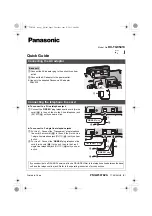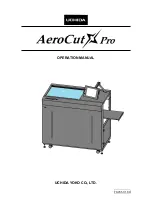
−
48
−
^6
^5
^4
^3
0.5 mm
^2
Adjustment Procedures
Results of Improper Adjustment
™
Loosen the screw
%8
and fix the thread guide attaching base
^0
to the extreme right.
Loosen the screw
%9
and adjust the respective heights “
R
”
referring to the left table. Make the fine adjustment watching
the actual stitching.
™
If it is raised, the needle thread
is tightened.
™
If it is lowered, the needle thread
slackens.
™
The tightened stitches of the right
needle and left needle can be
simply slackened if the thread
guide attaching base is moved
to the left.
™
Adjust the position by loosening the screw
%8
and move the
presser foot
%9
to the left and right.
™
Adjust the height by loosening the nut
^3
and rotate the screw
^4
and hit it to the lever
^2
so that the needle top comes 0.3
mm over from the lower part of the presser foot when the needle
is in its highest point. At this time, loosen the two screws
^1
and fix the collar
^0
so that the clearance between the collar
and the lower bushing is 0.2 mm.
Adjust by loosening the nut
^5
and rotate the screw
^6
so that
the clearance between the top end of the screw
^6
and the
lever
^2
becomes 0.5 mm on condition that the presser foot
descends and rests tightly on the throat plate.
™
If the position of the presser foot
is not correct, it will cause
defective and non-straight
sewing.
™
If the height of the presser foot
is not correct, it will cause
breakage of the spreader, the
needle scratch on workpiece,
defective sewing and the lack
of feeding force.
From
the
library
of:
Diamond
Needle
Corp
















































